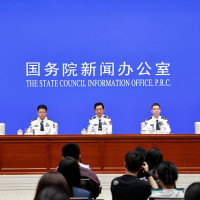- Thursday, 31 July 2025
Out of Tricks: U.S. Tariff Policy Trapped in Strategic Exhaustion
Muhammad Zamir Assadi
One month after U.S. President Donald Trump rolled out the mega tariff plan in a bid to make his country great again, hundreds of millions of households and companies this willful policy claimed to protect are groaning from the pain in the neck.
According to SmartScout, a U.S.-based e-commerce analytics firm, 930 items on Amazon saw price hikes since April 9—the day a 109% tariff on Chinese imports took effect, later raised to 245%. The average increase was 29%, spanning categories such as clothing, jewelry, household items, electronics, and toys.
Fearing a disruption in access to Chinese goods, American consumers rushed to stock up on everything from made-in-China Insta360 cameras to canned vegetables and instant coffee. Yet amid the frenzy, many found themselves hesitating over big-ticket items like the iPhone, choosing instead to save for an increasingly uncertain future.
Despite this panic-driven spending spree, U.S. consumer expenditure—the backbone of GDP—rose only 1.8% in Q1, the slowest pace since mid-2023. Meanwhile, the U.S. economy shrank by an annualized 0.3% in the first quarter, its first contraction in three years. New York Federal Reserve President John Williams has warned that tariffs could push inflation as high as 4% this year.
With few cards left to play, Washington is reportedly working on a tiered tariff structure, possibly paired with a partial rollback of existing China duties, according to a senior U.S. official. Under this framework, duties could range from 35% on low-risk imports to 100% on strategic goods like semiconductors and AI hardware.
But the damage already done may be difficult to undo.
“Even if there's room to reduce tariffs, policy uncertainty continues to dampen investment activity and household spending,” said Chim Lee, an analyst at the Economist Intelligence Unit. “The inflationary pressure only underscores the U.S.’s deep reliance on Chinese imports. From consumer to industrial goods, finding alternative suppliers in the short term is extraordinarily difficult.”
Technology remains a top concern for Washington, with efforts underway to reshore critical supply chains. A public comment period regarding new tariffs on semiconductors and other technologies is ongoing, expected to conclude in early May. However, the outcome may be self-defeating.
“These higher tariffs and export controls on AI chips could easily backfire. Chinese tech developers now have every incentive to innovate rapidly,” said Lee.
Reflecting on the 2018 trade war, China has already fully overcome 22 of the 35 critical technologies it was once vulnerable to—including operating systems and lithium battery membranes.
Following reports of a tiered U.S. tariff plan, China’s Sci-Tech Innovation 50 Index turned positive intraday, rising more than 0.5% at one point. While Chinese chipmakers and high-end equipment suppliers may face price suppression or supply-chain shifts, there’s a silver lining: rising global costs are forcing companies that rely on imported high-end materials and tools—like photoresists and EDA software—to consider local suppliers. In the long run, this could accelerate China's push for even greater technological self-sufficiency.
Recent financial results show that China's endeavour for self-developed technologies is more than just a slogan. Among the 84 companies on the STAR Market that disclosed 2024 financials, 62% reported over 20% year-on-year revenue growth. The semiconductor, innovative pharmaceuticals, and industrial robotics sectors were especially strong.
Enterprises that rely on imported high-end materials or equipment (such as photoresist and EDA software) may be forced to seek alternative domestic suppliers. In the long term, this is conducive to accelerating self-reliance.
Even for high-end chips that mainly rely on imports, Morgan Stanley economist Gary suggested that AI application is gaining more weight over hardware. Restrictions on Nvidia exports may slow development but are unlikely to prevent China from becoming an AI powerhouse.
Temporary policy swings and market volatility will eventually be overshadowed by the tide of industrial progress, a Chinese financial outlet JRJ.com points out.
Meanwhile, on the other side of the Pacific, warning signs are flashing.
A study by SemiAnalysis warned the economic uncertainty induced by Trump tariffs could become “the single largest barrier” to American AI supremacy, which could force leading AI labs to abandon their training efforts to preserve cash in the worst-case scenario.
Despite promises of multibillion-dollar investments from tech giants like Apple, Nvidia, and IBM in domestic manufacturing, formidable hurdles persist: labor shortages, wages twice as high as China's and six times Vietnam’s, and tariff-driven costs across supply chains.
Chris Miller, the author of Chip War, recently argued in the Financial Times that imposing tariffs on semiconductors could accelerate the offshoring of U.S. chip production. Suppliers may move the entire manufacturing process overseas instead of importing chips and installing them in domestically produced electrical appliances or cars in the United States. Although these end products may still face tariffs, at least the cost of the entire manufacturing process is relatively low.
More broadly speaking, tariff escalation will not badly derail China’s growth at all, EIU research found.
Though a short-term shock is inevitable, China’s diversified overseas investment strategy and targeted domestic stimulus efforts can effectively cushion the blow.
China has also reduced its export reliance on the U.S., with the U.S. share of Chinese exports dropping from 19% in 2018 to 14% in 2024.
At home, China is expanding its consumer goods and services spending subsidies, providing more income transfers (including nationwide birth subsidies), and enhancing social security benefits, although the total size of direct financial support remains moderate relative to China's GDP. Non-financial measures will also be implemented, such as curtailing overtime in the workplace (since a significant amount of leisure time is perceived to incentivize consumer spending) and spurring demand by providing “high-quality” goods and services.
Lee projects a gradual rebalancing that could sustain long-term growth of domestic demand through solidifying the social safety net for disadvantaged groups such as the elderly rural population, enhancing the economic rights of China's rural population, and encouraging their urbanization.



-original-thumb.jpg)


-original-thumb.jpg)
-square-thumb.jpg)



-original-thumb.jpg)
-original-thumb.jpg)
-original-thumb.jpg)
-original-thumb.jpg)

